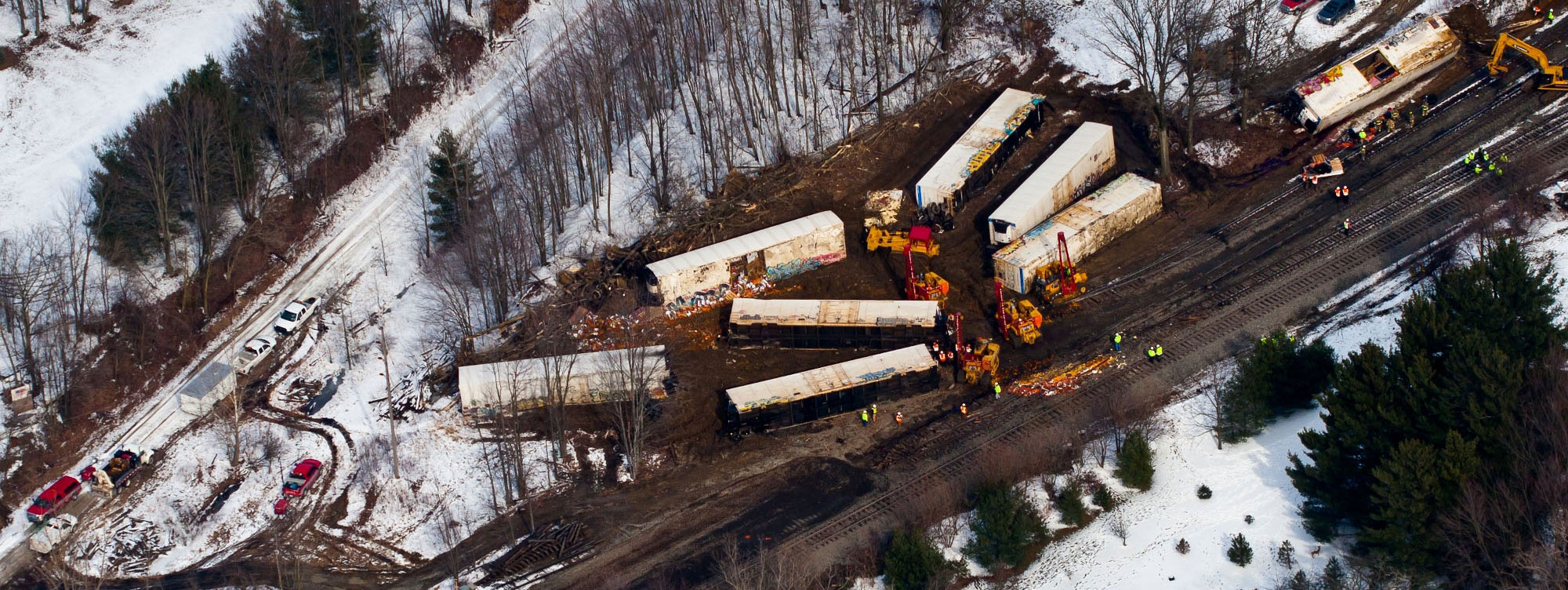
What Does a Train Accident Lawyer Do?
Train accidents are often horrific and devastating and can be extremely complicated to navigate to determine liability and responsibility. If you or a family member have been involved in a train accident, it’s important to contact a train accident lawyer experienced in railroad accident claims.
The Law Firm of Nicholas E. Tzaneteas has experienced train accident lawyers. We have helped victims and the family of victims who were involved in a New York train accident lawsuit.
Common Causes of Train and Subway Accidents
Train accident victims include drivers who have been hit by trains, railroad workers who have suffered injuries while the train is in motion or while performing maintenance tasks (this would fall under the Federal Employers Liability Act – FELA), and railroad passengers. Injuries can be catastrophic and fatal.
Train accidents on trains and in train stations occur for a variety of reasons, including:
· train operator error or negligence
· excessive speed
· train derailment
· train and car collisions
· defective train tracks
· unsecured crossbars at railroad crossings
· electrocutions
· sudden stops
· closing doors
· negligent security
· broken stairs or platforms (causing slips and falls)
· defective or broken escalators
· defective equipment
· poor track maintenance
· technological malfunction
· insufficient lighting
· obstructed walkways
· failure to post warning signs
Subway accidents may occur because the conductor was negligent by failing to ensure that passengers were clear of the train.
Common Train Accident Injuries
The most common physical injuries after a train accident include fractures, back and neck injuries, soft-tissue damage, traumatic brain injuries (TBIs), internal organ damage, spinal cord injuries, and amputations.
Who Is Responsible for Investigating a New York Train or Subway Accident?
Train accidents are investigated by the National Transportation Safety Board (NTSB). Train accident investigators from the NTSB are available 24 hours a day, seven days a week. Typically, their on-scene investigations take seven to 10 days. Local and state investigators, as well as police officers, are frequently involved in these investigations.
Who Can Be Sued for Train Accidents
Railroad companies must provide the highest care to their passengers from when they board the train until they exit. If passengers are injured, the carriers are liable, even if their fault in the accident was minor, a third party caused the accident, or due to weather conditions. The common carriers that can be sued for a New York train accident are the Metropolitan Transportation Authority (MTA), the New York City Transit Authority (NYCTA), and Amtrak.
The MTA is responsible for operating, maintaining, and improving public transportation in the Metropolitan Commuter Transportation District (MCTD), which comprises New York City and the counties of Dutchess, Nassau, Orange, Putnam, Rockland, Suffolk, and Westchester. The MTA oversees the operations of the New York City bus and subway systems, the regional commuter railroads, seven bridges, and two tunnels located in New York City.
The NYCTA manages the subway and bus service in New York City. Amtrak operates intercity passenger rail services in 46 states and the District of Columbia.
New York State Law/Statutes in Train Accidents
According to New York’s Statute of Limitations, you must file a personal injury claim within three (3) years of a train or subway accident. Your claim may only be accepted if you submit it within this time frame. You must file a wrongful death lawsuit within two (2) years of the death of a loved one in a train accident. To file a claim against a government entity, you must first file a Notice of Claim within 90 days of the accident and then file a lawsuit within one (1) year and 90 days of the accident.
Damages You Can Pursue in a Train Accident
If the passengers are injured, carriers are liable for the injury, even if their fault in the accident was minimal or the accident was caused by third parties or weather conditions. In the aftermath of a subway or train accident, victims can seek compensation for economic and non-economic damages. Economic damages include medical expenses, lost wages, therapy and rehabilitation care costs, property damage, or funeral and burial costs in the case of a fatality. Non-economic damages include pain and suffering, loss of companionship, loss of consortium, mental anguish, and diminished future earning capacity.
The knowledgeable New York train accident lawyers at the Law Firm of Nicholas E. Tzaneteas can help you seek the maximum compensation you deserve.
Proving Liability in Train Accidents
Evidence must be gathered to prove an accident was a result of negligence. This can include surveillance footage, photos and videos by other passengers, witness testimony, and statements from NYCTA/MTA employees. An experienced New York train accident lawyer and their legal team will know what evidence to collect and how to get it, in addition to representing you in your pursuit of fair compensation.
Contact the Personal Injury Lawyers at the Law Firm of Nicholas E. Tzaneteas
At the Law Firm of Nicholas E. Tzaneteas, we represent clients in train and subway accidents involving the MTA, Amtrak, LIRR, Metro North, PATH, NYCTA, and other railroad-related accidents. We will provide you with a free initial consultation to discuss your case.